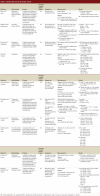Physiological weight loss in the breastfed neonate: a systematic review
- PMID: 21602959
- PMCID: PMC3091615
Physiological weight loss in the breastfed neonate: a systematic review
Abstract
Background: Healthy, full-term, exclusively breastfed infants are expected to lose weight in the first days following birth. There are conflicting opinions about what constitutes a normal neonatal weight loss, and about when interventions such as supplemental feedings should be considered.
Objective: To establish the reference weight loss for the first 2 weeks following birth by conducting a systematic review of studies reporting birth weights of exclusively breastfed neonates.
Methods: We searched 5 electronic databases from June 2006 to June 2007: the Cochrane Database of Systematic Reviews; MEDLINE (from 1950); CINAHL (from 1982); EMBASE (from 1980); and Ovid HealthSTAR (from 1999). We included primary research studies with weight loss data for healthy, full-term, exclusively breastfed neonates in the first 2 weeks following birth.
Results: Eleven studies met the inclusion criteria. Definitions, types of measurements, and reporting styles varied among studies. In most studies, daily weights were not measured and measurements did not continue for 2 weeks. Mean weight loss ranged from 5.7% to 6.6%, with standard deviations around 2%. Median percentage weight loss ranged from 3.2 to 8.3, with the majority around 6%. The majority of infants in these 11 studies regained their birth weight within the first 2 weeks postpartum. The second and third days following birth appear to be the days of maximum weight loss.
Discussion: Methods used to report weight loss were inconsistent, using either an average of single lowest weights or a combination of weight losses. The 7% maximum allowable weight loss recommended in 4 clinical practice guidelines appears to be based on mean weight loss and does not account for standard deviation. Further research is needed to understand the causes of neonatal weight loss and its implications for morbidity and mortality.
Conflict of interest statement
Competing interests: None declared.
Figures
Similar articles
-
Systematic Review of Expected Weight Changes After Birth for Full-Term, Breastfed Newborns.J Obstet Gynecol Neonatal Nurs. 2019 Nov;48(6):593-603. doi: 10.1016/j.jogn.2019.09.004. Epub 2019 Oct 11. J Obstet Gynecol Neonatal Nurs. 2019. PMID: 31610141
-
Nursing and midwifery management of hypoglycaemia in healthy term neonates.Int J Evid Based Healthc. 2005 Aug;3(7):169-205. doi: 10.1111/j.1479-6988.2005.00025.x. Int J Evid Based Healthc. 2005. PMID: 21631748
-
Nursing and midwifery management of hypoglycaemia in healthy term neonates.JBI Libr Syst Rev. 2005;3(7):1-63. doi: 10.11124/01938924-200503070-00001. JBI Libr Syst Rev. 2005. PMID: 27819960
-
Beyond the black stump: rapid reviews of health research issues affecting regional, rural and remote Australia.Med J Aust. 2020 Dec;213 Suppl 11:S3-S32.e1. doi: 10.5694/mja2.50881. Med J Aust. 2020. PMID: 33314144
-
Early weight loss and weight gain in healthy, full-term, exclusively-breastfed infants.Breastfeed Rev. 2014 Mar;22(1):31-42. Breastfeed Rev. 2014. PMID: 24804521 Review.
Cited by
-
Effect of birth weight and weight change during the first 96 h of life on childhood body composition--path analysis.Int J Obes (Lond). 2015 Apr;39(4):579-85. doi: 10.1038/ijo.2015.11. Epub 2015 Feb 3. Int J Obes (Lond). 2015. PMID: 25644055
-
Determinants of excessive weight loss in breastfed full-term newborns at a baby-friendly hospital: a retrospective cohort study.Int Breastfeed J. 2020 Mar 24;15(1):19. doi: 10.1186/s13006-020-00263-2. Int Breastfeed J. 2020. PMID: 32209129 Free PMC article.
-
Iatrogenic newborn weight loss: knowledge translation using a study protocol for your maternity setting.Int Breastfeed J. 2011 Aug 15;6(1):10. doi: 10.1186/1746-4358-6-10. Int Breastfeed J. 2011. PMID: 21843331 Free PMC article.
-
First trimester use of artemisinin-based combination therapy and the risk of low birth weight and small for gestational age.Malar J. 2020 Apr 8;19(1):144. doi: 10.1186/s12936-020-03210-y. Malar J. 2020. PMID: 32268901 Free PMC article.
-
Factors associated with birthweight and adverse pregnancy outcomes among children in rural Guinea-Bissau - a prospective observational study.BMC Public Health. 2021 Jun 17;21(1):1164. doi: 10.1186/s12889-021-11215-8. BMC Public Health. 2021. PMID: 34140010 Free PMC article.
References
-
- Hartmann P E. Lactation and reproduction in Western Australian women. J Reprod Med. 1987;32(7):543–7. - PubMed
-
- Lawrence RA, Lawrence RM. Mosby. St. Louis (MO): Mosby; 1999.
-
- Breastfeeding Committee of Canada. Breastfeeding definitions and data collection periods. 2006. http://www.breastfeedingcanada.ca/pdf/BCC%20Breastfeeding%20Def%20and%20....
-
- Livingstone V H, Willis C E, Abdel-Wareth L O, Thiessen P, Lockitch G. Neonatal hypernatremic dehydration associated with breast-feeding malnutrition: a retrospective survey. CMAJ. 2000;162(5):647–52. http://www.cmaj.ca/cgi/pmidlookup?view=long&pmid=10738450. - PMC - PubMed
LinkOut - more resources
Full Text Sources
Medical
Miscellaneous




